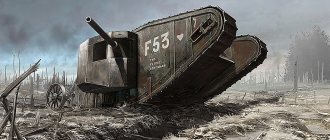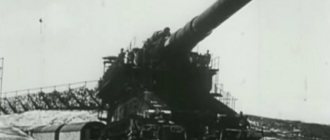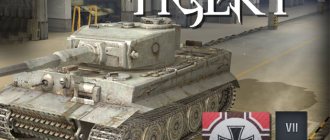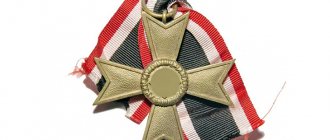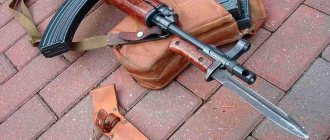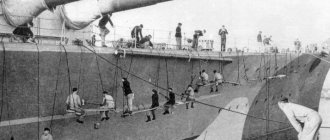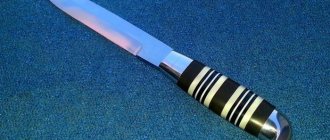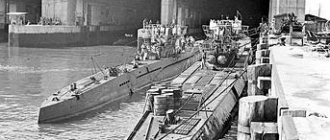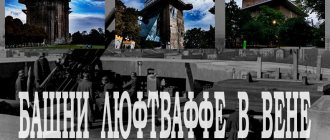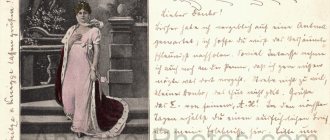Having lost First World War, Germany, under the terms of the Versailles Peace Treaty, did not have the right to build tanks. German designers did not have the experience to create tracked armored vehicles. The first "Panzer" (Panzer Kampfwagen) Pz.Kpfw I And II were light tanks, their armament and armor were weak, and their maneuverability remained at the level of a caterpillar tractor. For many years, in Russian literature it was not customary to call German tanks “Panzers”. Usually the letter “T” (tank) was placed in front of their serial number. To facilitate reading in the future, the reader will encounter similar names in the text.
The first “Panzers” were launched into mass production as agricultural tractors. The T-I tank, armed with two machine guns, was considered a training vehicle
Crews were trained on the first German tanks, practiced tactics and strategy for using tank units, and learned to fight. The Germans began developing battle tanks in the mid-1930s, after Hitler came to power. In those years, it was believed that the main striking force should be two main tanks. One is fast, with good armor protection and light weapons. He had to break through the enemy’s defenses and build on success - this is the T-III . The second tank, T-IV , not so fast, but with a more powerful gun, must support the actions of the first with fire. The military demanded that the Troika's armor be able to protect the crew from enemy anti-tank gun fire from all directions.
In 1943, the T-III tank was discontinued, and the chassis was useful for the production of more powerful assault guns
On the heavier T-IV, thicker armor was placed in the frontal part, thinner armor was placed on the sides and in the rear. The crew consisted of five people: commander, gunner, loader, driver, gunner-radio operator. At that time, most light and medium tanks had a crew of 2-3 people, and the load on them was high. The commander, in addition to performing his direct duties, looked for targets, aimed the gun, and fired. He was assisted by a loader, and the driver controlled the combat vehicle. Increasing the crew size on T-III and T-IV made it possible to reduce the workload on tank crews.
Initially, the T-III's armament consisted of a 37 mm cannon, then it was replaced by a 50 mm cannon (this caliber was considered sufficient at the start of World War II). But in the summer of 1941, the inability of the 50-mm cannon to fight the Soviet T-34 and KV tanks was revealed. Even the latest long-barreled 50mm cannon could not penetrate their frontal armor. The Germans failed to install a more powerful 75-mm cannon. The supply of “troika” was exhausted.
On the T-III, the Germans placed the engine in the rear of the hull, and the gearbox and drive wheels in the front. The shaft transmitting torque from the engine to the transmission passed under the floor of the fighting compartment, which is why the tank turned out to be tall.
Main tank of the Wehrmacht
On the eve of the war in the German army, the task of fire support and destruction of crews of anti-tank guns, pillboxes and other enemy strongholds was assigned to the Pz.Kpfw IV (T-IV) . Structurally, the “four” was similar to the “troika”: a body with many hatches and hatches, which was convenient for operating the combat vehicle. The engine was located in the stern, the transmission was located in front, and the turret was in the middle part. But the “four” was larger due to the installation of a more powerful 75 mm gun. In those years, there were no targets on the battlefield that could withstand his fire.
The T-IV was armed with a 75-mm short-barreled cannon and its ammunition included high-explosive and fragmentation shells. Their destructive power was higher than armor-piercing 37- and 50-mm shells
The T-IV was not supposed to “climb” into enemy trenches. This task was assigned to the more “nimble” T-III. The “four,” slowly moving behind the “troika,” searching for important targets and destroying them with high-explosive shells, provided reliable fire cover for the T-III. The “four” was protected from enemy fire by powerful frontal armor, which was thicker than the armor of the sides and stern. In fact, the T-IV tank served as a self-propelled gun in battle.
Everything changed in the summer of 1941. Hitler’s tank crews were shocked to see their 75-mm shells bouncing off the armor of Soviet combat vehicles like peas. The problem of restoring parity has acquired exceptional importance. Since the turret ring of the “four” had a larger diameter than the shoulder strap of the “troika” (the tank was larger in size), a powerful long-barreled 75-mm cannon was installed on the combat vehicle, the projectile of which pierced 90-mm armor. But the armor of the “four” was insufficient by the standards of the Eastern Front. After all, German designers made doors on the side of the tank turret through which tankers loaded ammunition. And it was more convenient to climb into the tank. But any cut in the armor weakens its protective qualities. And if a shell hits the “door” hanging on its hinges, then don’t expect anything good. The Germans knew about this. But they created the T-IV as a fire support tank. He was supposed to follow the T-III and destroy enemy anti-tank weapons with the fire of a powerful cannon.
T-IV model 1943
In battle, the T-IV could not expose the sides where the hatch doors were located to the enemy. When the Germans discontinued the T-III, the T-IV tank became the main tank of the Wehrmacht. For additional protection, removable 5 mm steel screens were installed on the sides of the hull and on the T-IV turret. At the same time, the German leadership thought about stopping production of the T-IV in favor of the more powerful Panther .
Experts doubted the possibility of mass production of complex Panthers, so the T-IV tank was produced until the end of World War II, becoming the most popular Wehrmacht tank. A total of 9.5 thousand T-IVs were built. sizes
406-mm self-propelled gun SM-54 (2A3) “Condenser”.
0
Soviet experimental self-propelled artillery unit of special power. Not mass produced. The final weight of the installation is 64 tons. The weight of the projectile is 570 kg, the maximum firing range is 25.6 km. A total of 4 artillery pieces were manufactured. In 1957, the 2AZ self-propelled gun was paraded on Red Square and created a sensation among domestic citizens and foreign journalists. The gun is definitely very cool. But damn, Capacitor? Seriously? Why not a transistor, diode or fuse?
×
"Panther"
Today no one denies the fact that the German heavy tank Pz. Kpfw V "Panther" was created in the image and likeness of the Soviet "thirty-four". Just look at the shape of their hull and turret. Already in the first days of the war, shocked by the power and invulnerability of Soviet tanks, the commander of armored forces , General Heinz Guderian, demanded that German designers carefully study the T-34 tank and immediately begin its serial production in Germany. At Guderian's suggestion, a special commission was urgently created to study captured Russian tanks. The commission confirmed Guderian's opinion about the T-34's outstanding design features. At the same time, she noted that the Russians were able to create such advanced tanks and diesel engines for them that it would be impossible to copy them in German factories. The only thing that remained for the Germans was to do at least something similar. Thus began work on the future “Panther”.
Until the end of the war, the Germans produced 6 thousand Panthers. It was the second most popular (after the T-IV) Wehrmacht tank
During the design of the new tank, the Germans tried to equip it with the most powerful gun of all guns, with a caliber of 75 mm, and cover it with impenetrable armor , the thickness of which was almost twice the thickness of the armor of the T-34 tank and reached 80 mm in the frontal part of the hull. The result was not a medium tank, as Guderian wanted it to be, but a real, 45-ton heavy tank. The Germans considered the Panther their best tank, and therefore devoted all their efforts to launching its mass production.
During the fighting it became clear that the Panther was not very suitable for an offensive. The relatively small caliber of its gun did not make it possible to destroy powerful enemy defenses. Too little explosive could fit in a 75mm shell. But the Panther's long-barreled cannon was good for shooting at enemy tanks. An armor-piercing projectile fired from it, flying at enormous speed, hit T-34 type tanks head-on from two kilometers away.
The first 200 Panthers took part in the last major offensive operation of the Wehrmacht in 1943 on the Kursk Bulge, after which the German army retreated all the time. The main targets for the Panthers until the end of the war were only advancing enemy tanks.
An attempt to equip the Panther with a more powerful 88 mm cannon led to the creation of the turretless fighter tank Jagd Panther . It is also impossible not to mention the fact that the Panther was equipped with the most advanced optical observation devices and sight .
Good optical observation devices and a sight made it possible to hit tanks even from a very long distance
Nuclear bomb RDS-7 "Fool".
0
Soviet implosion-type atomic bomb with a core of uranium 235. It was developed in the early 1950s. The weight of the bomb was 4.6 tons, the charge core contained several tens of kilograms of uranium 235. Depending on the mass of uranium, the charge power ranged from 0.5 to 1 megaton. In the photo, Academician Yu. B. Khariton in the RFNC-VNIIE museum near the body of the RDS-1 bomb, the predecessor of the RDS-7.
"Tiger"
The most famous German heavy tank created during World War II was the Tiger. It appeared at the beginning of 1942 as a result of a competition between two famous ones and “Henschel”. True, the designers and Porsche did not design the tank as a whole, but only the chassis and hull. The tower was designed by the famous armory.
The installation of a powerful and heavy gun, as well as thick armor, sharply increased the mass of the Tiger tank: it exceeded 50 tons
Professor Ferdinand Porsche was so confident in the superiority of his project that he even ordered the start of mass production of heavy tanks. But I miscalculated. She won, and it was her tank that went into production under the designation Pz.Kpfw VI and the personal name “Tiger”. And 90 finished chassis were subsequently used to create the equally famous Ferdinand .
On the battlefield, the Tiger could not be confused with Soviet tanks. Its shapes turned out to be unusual. The designers had to make a vehicle with very thick armor and a powerful cannon in a short time. The Germans did not have time to develop new technology. Thick armor plates, and their thickness in the frontal part reached 100 mm, are very difficult to connect. Therefore, to simplify assembly, the armor plates were placed vertically. This made it possible to make the top armor plate very wide and to place a huge turret with a powerful 88-mm cannon on it, capable of hitting T-34 and KV tanks from any distance. The Tiger weighed almost as much as two Panzer IV tanks. To provide the tank with acceptable maneuverability, it was equipped with very wide tracks.
From the Western Front came the Allied legend of the German Tiger as the most powerful and invulnerable tank in the world.
For the first time in large numbers, “Tigers” entered the battlefield in 1943 on the Kursk Bulge, where they demonstrated their power over our tanks armed with 45- and 76-mm cannons. The Tigers' superiority over Soviet combat vehicles did not last long. In 1944, 100 mm armor could no longer protect the Germans from shells from the new Soviet IS-2 and T-34-85 tanks, as well as powerful self-propelled guns Su-100, ISU-122 and ISU-152. On the Western Front, the Allies did not have tanks like the IS-2. The Americans and British, when they first encountered the Tigers in battle, were amazed by their combat power. The Germans themselves did not think so and stopped production of these tanks in August 1944. The main reason was that the Soviet newest heavy Tiger tanks were no longer scary. The "Tiger" was replaced by the "Royal Tiger" or "Tiger II".
VHF radio station R-173 “Paragraph”.
0
This radio station was produced by the Ryazan Radio Plant. It is designed to provide two-way telephone radio communication between moving objects when moving and when parked. Provides reception and transmission of information in non-search and non-adjustment modes. Despite its name, judging by the reviews, the radio station is quite good and performed its tasks properly.
9-mm silent grenade launcher pistol "Woodpecker".
0
It is a single-shot pistol chambered for special 9 mm caliber ammunition with manual reloading. Two types of cartridges are used: PFAM “Phalanx” with an armor-piercing bullet and an expelling cartridge PMAM “Mouthpiece” (also, by the way, interesting names), which ensures the ejection of a grenade from the muzzle attachment of a weapon. On top of the receiver there is an adjustable open sight for firing conventional ammunition. In general, such a “Woodpecker” can kick pretty hard.
Tiger Specifications
Work on creating a heavy tank progressed quite quickly at Henschel, which was primarily due to the specialists’ already existing experience in creating combat vehicles. So, by June 1942, it was planned to begin mass production of the Tiger, so that by 1943 the army would have at least 285 combat vehicles at its disposal. The sample was based on the classic design, in which the transmission was front-mounted. It was decided to combine its units with the control compartment in order to maximize the increase in the combat compartment. The crew members had much more free space due to the rational layout of the main components of the tank.
Not without introducing a number of innovations and innovative ideas. They installed a high-quality power steering, which, according to Otto Carius, made it possible to control the 57-ton tank literally “with the finger of one hand.” The sample was equipped with a semi-automatic gearbox with eight forward and four reverse gears, manufactured by Maybach. The transmission worked like this: the operator moved the lever to the desired position, after which the required gear was engaged via a servo drive without the participation of a crew member.
The chassis was both complex and interesting: the support rollers, 24 in number, were arranged in four rows per row, and in a checkerboard pattern. The torsion bar suspension ensured the tank's smooth ride and accurate aiming while moving. Initially, a 12-cylinder power unit was installed, the Maybach HL 210P30 engine, whose power was 650 horsepower. But later it was replaced by a 700-horsepower Maybach HL 230P45 engine. As for the sight, here, just as in the case of the engine, changes occurred: at first the combat vehicle was equipped with a TZF9a binocular telescopic sight, but later it was equipped with a TZF9b monocular sight.
Photo and video
Flakpanzer IV "Möbelwagen"
Hummel
Jagdpanzer IV
Nashorn
A Soviet soldier inspects a destroyed PzKpfw IV More material on the topic
- M4 Sherman
- New deadly tank T90MS
